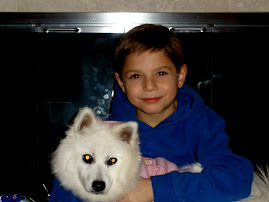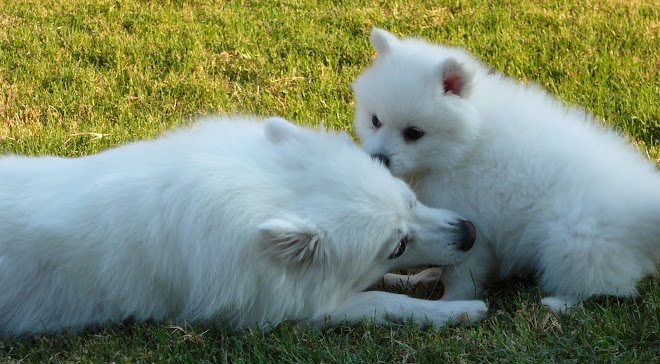 Written December 8, 2008
Written December 8, 2008Studies have shown that dogs can start learning basic commands as young as 8 weeks of age. However, puppies, like small children, have a short attention span. Because of this, it is best to teach commands in five - ten minute training sessions, two - three times per day, until your puppy fully understands and carries out the command you give. The use of positive reinforcement with a tasty treat will help your puppy learn quickly. From young to old, all dogs will be eager to work if the reward is enticing.
When training all ages of dogs, always remember - PATIENCE IS THE KEY. If your dog senses your frustration, he will also become frustrated. At all times, keep a positive attitude. Scolding your dog will only turn your dog off to the fun of these exercises. If you keep learning fun for your dog, he will be eager to learn everything you are willing to teach.
The “Sit” command is, without a doubt, the most practical command you can teach your dog. Additionally, “Sit” is a kind of gateway to other basic, but important commands you will want to teach your dog in the future, such as “Stay”, “Down” and “Come”.
Begin the training in a quiet environment, where your dog is less likely to be distracted. If your dog is very easily distracted by noises or smells, training indoors may be best. Now, face your dog and show him that you have a treat in your hand. Let him smell it and even lick it to let him know that a tasty goodie is in store for him.
Next, slowly move the treat just above his head so that he can barely reach it without lifting his front feet from the floor. Hold the treat directly above his head, just above his eyes, however, be sure not to hold the treat so high that your dog may be tempted to jump for it.
Now, say “Sit”. If your dog does sit, give him the treat and praise him excitedly. If he doesn’t sit immediately, wait 3 seconds and say “Sit” again. Repeat this process until your dog sits. As long as you continue to hold the treat in the correct position over your dog’s head, he will eventually sit, as he will get tired of looking up at such a hard angle.
If your pooch is a little hard-headed, and you have repeated the process in the above paragraph ten times with no result, gently touch your dog’s rump, lightly push for encouragement and repeat the command only once. Don’t push hard, as this can cause joint problems in the future. If the little guy still doesn’t sit, calmly stop the session, pet him a little on the head, and put the treat away for 3 or 4 minutes. Then try again. Don’t get frustrated. Remember - PATIENCE IS KEY! As with anything you teach your dog, always end your training sessions on a positive note. The more successful your dog feels, the more rewarding it will be for both of you.
Every time your dog does sit after you give the command, give the treat immediately and praise him excitedly. He will start to realize that when he’s standing, nothing happens, but when his little butt hits the floor, he gets the treat and everyone is happy!
Practice this command two - three times per day for about a week. Practice in other parts of the house and outside (i.e., in the garage or on the sidewalk). Once your dog has fully mastered this so that he responds every time regardless of the distractions around him, it’s time he learns to obey even if his only reward is your excited praise, rather than a treat. You may not always have a treat on you when you need your dog to sit. Gradually wean off the treats so that he gets them only every second or third time, always substituting lots of excited praise for the treat.
Once you are confident that your little dog has fully learned “Sit“, you are ready to teach your dog the “Stay” command.












